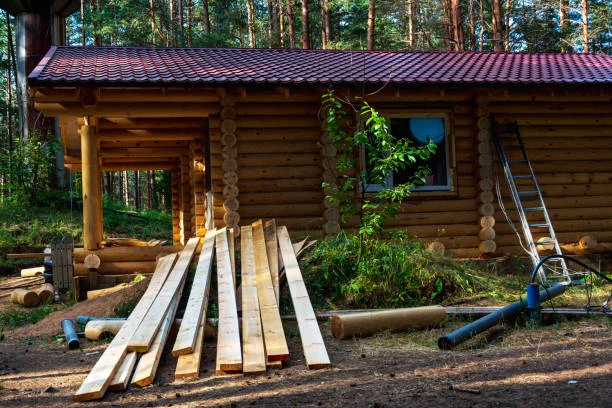A log cabin can last several years, but it will eventually succumb to aging, necessitating prompt repairs. Even with routine maintenance, the wood will become old, settle, and the ground can shift, leading to deterioration. You can schedule timely log cabin repair services to prevent major damage. Here are a few things to know before you start looking for repair services:
Inspecting Structural Integrity
Begin log cabin repair by assessing the structural integrity of the building. Inspect areas where the wood may have softened, split, or separated at the joints. Over time, water can damage beams and the cabin frame, leading to hidden issues if left unaddressed. Examine the foundation, rooflines, and load-bearing walls for signs of uneven settling or noticeable gaps.
Identify small problems before they spread, such as warped siding or sagging corners. Catch these early warning signs and schedule log cabin repair services quickly to prevent further damage to your cabin. A thorough inspection enables you to identify and address issues that compromise the cabin’s structural integrity, which is directly tied to its safety and longevity.
Selecting the Right Materials
Log cabins are constructed from logs joined with caulking and chinking. When maintaining or restoring a cabin, you may choose logs that match the existing structure to preserve its character. Many repair specialists also offer modern treatments that enhance resistance to moisture, temperature fluctuations, and wood movement. Use quality sealants and wood treatments to protect the exterior from weather-related wear.
When repairing partially damaged or rotten logs, use high-quality epoxy to restore their structural integrity. Use the right materials, such as brushes, sprayers, and power washers, for heavy-duty cleaning. Log repair professionals can match the original log species and cuts to replicate the original construction, maintaining uniformity. Selecting materials compatible with the surrounding environment also supports durability and overall stability.
Dive into stories that spark curiosity—your next favorite read.
Managing Moisture and Pests
Moisture and insects gradually weaken logs, reducing a cabin’s lifespan. To minimize exposure to moisture, direct rainwater away from exterior walls with gutters, downspouts, and proper grading. Seal cracks and gaps with durable caulking, and apply wood treatments that deter insects. Certain areas are affected by termites, carpenter ants, and other pests, such as beetles. Trimming nearby vegetation can also improve airflow and reduce hiding places for pests.
Regularly inspect hidden corners, basements, and crawl spaces to detect early signs of dampness or insect activity. Reinforce vulnerable areas with protective barriers or targeted treatments to slow deterioration. Controlling moisture and pests helps maintain the cabin’s stability while preserving its appearance.
Following Maintenance Routines
Regular maintenance keeps a log cabin functional and safe on a day-to-day and seasonal basis. Focus on tasks that prevent immediate damage, such as inspecting gutters, clearing debris, and checking for leaks or cracks in accessible areas. Promptly address small issues, including minor wood splits or loose joints, to avoid larger repairs later. Maintaining a detailed record of each repair, treatment, or adjustment provides a reference for tracking recurring issues and overall cabin condition.
Plan inspections after harsh weather events, such as storms, heavy snowfall, or flooding. Identifying weaknesses early allows you to intervene before structural damage becomes more severe. Work with your contractor to learn practical techniques for spotting minor problems, performing basic repairs, and knowing when professional intervention is needed.
Planning Long-Term Upkeep
Long-term cabin care focuses on preserving structural integrity and extending the life of materials over years or decades. Develop a multi-year plan that schedules resealing, refinishing, and other treatments that protect logs from moisture, UV exposure, and natural aging. Coordinate with your contractor to establish a timeline for significant repairs or upgrades. These solutions may include replacing aged logs, updating chinking, or improving drainage. Addressing long-term cabin repairs can help your cabin remain safe and durable for years to come.
Speak to a Log Cabin Repair Contractor
Repairing a log cabin may involve replacing damaged wood, applying caulking, and filling gaps with chinking. To preserve the look of a historical cabin, professionals will select traditional materials and log species that match the original construction. They may also update the look with new materials that offer enhanced resilience against poor weather conditions, depending on your location. Contact a log cabin repair contractor today to find out more about their services.
Discover insights you didn’t know you needed—click to explore on Management Works Media now!






